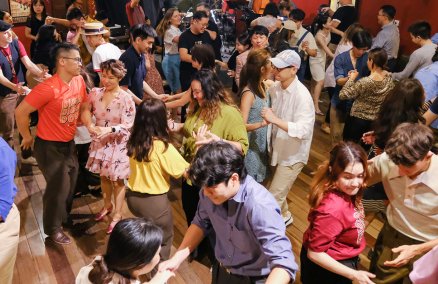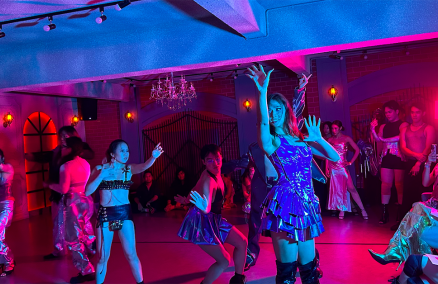The difference between a color photo and a black and white one is that the latter tends to lead viewers straight to the subject of the photo, without all the decorations or distractions of color.
I’ve worked with black and white before, and that’s over. I said what I wanted to say about Bangkok in that time period. Now, I want to let my ideas run wild, I don’t want to be tied down in terms of my art.
Bangkok has truly evolved. As you can see in my old collection, Bangkok is a clash of traditional values and innovations. The values that stemmed from our being an agricultural society were constantly clashing with the new values that come with industrialization, and the friction was visible.
I like to think of my work as contemporary art; I just happened to choose photography as the medium. Most of my work doesn’t adhere to the conventional norms of photography.
Whenever I find stories I like in the paper, I cut them out. I go back to them whenever I need inspiration. You could say my inspiration comes from whatever is happening in our everyday lives.
I originally wanted to study architecture, but I ended up in the faculty of fine arts instead. I met a lot of friends and professors, some of whom had just returned from living in the forests after the October 6 protests. It forced me to question the current state of society, education and even the meaning of life. It reminded me that selflessness and compassion still exist in society.
I was a photographer for advertisement agencies, a photojournalist for foreign publications, and I also worked on making documentaries for television. I did it for the experience. In my heart I’ve always wanted to create art.
I was sent to work at the border, documenting Cambodian militants who set up camp inside the Thai border in early 90s. I was even held captive for a few hours. They thought I was a part of the opposing Cambodian forces. I showed them my Thai citizen ID card, only for them to ask me how much I paid for it.
The experience made me question what I was doing, whether it was worth risking my life for. I was caught in a political conflict I had no stake in. I realized that my life has more meaning than that, which prompted me to quit my job as a photojournalist and become a freelance photographer instead.
When the 1997 crisis hit, the value of all my accumulated savings was almost entirely wiped out. A 100 baht bill was now worth only 50 baht. I asked myself where the other 50 baht went, and who could be held responsible. This led to the conception of my Pink Man and Bloodless War series of photos. I questioned the system I was living in by critiquing consumerism.
I realized I knew very little about my own country. My experiences were mostly confined to classrooms. I didn’t understand Thai society or culture as much as I wanted to.
I signed up to work in a TV documentary crew, which allowed me to travel around Thailand, documenting the various hill-tribes and their different lifestyles. I wasn’t even the cameraman. I was the scriptwriter, which meant I had to immerse myself in the different cultures.
I’m currently trying to mentor a new generation of contemporary photo artists, while also looking at older works in my Old Masters collection. I plan to simultaneously work on both.
Our ways of life have changed. We now live in a society that relies on a creative economy. Ironically, though, there is little investment in that field. In order to nurture creativity, we must rely on the foundations of art and culture, both old and new. People should be encouraged and incentivized to create new works of art.
The government must act as facilitators. The only kinds of art and culture being promoted by our government are the kind that serve only the phoo yai of our society. They’ve failed to recognize the fact that art and culture is an incredibly vast and varied field. It is a way of life.
There are many incredibly wealthy individuals in Thailand, but they do nothing good with their money. All they think about is how to gain profits as quickly as possible, employing means that are both legal and illegal, without thinking of the long-term ramifications.
Lower Silom is basically a condo slum. The construction of condos really destroys the view and environment, and causes even more pollution.


















